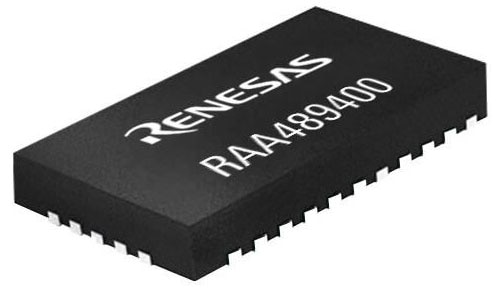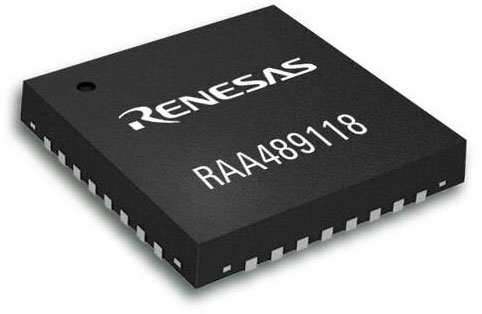Overcoming Design Challenges of USB Type-C PD Applications
When users can charge their devices effortlessly and without issue using USB Type-C Power Delivery (PD), product designers can rejoice in a project well done. That's because they've been able to navigate the complex challenges of USB PD charging.
Designed for scalability, USB PD is widely used in laptops, smartphones, peripherals, and IoT devices, reducing the need for proprietary power adapters. The technology is transformative, with a reversible connector that enables flexible, high-power charging and data transfer.
The connector can handle different voltages and power levels, from 5 V to 20 V and up to 100 W or more. Further, it can switch between power sources and sinks for more efficient power management. So, the payoff is fast charging, multi-device compatibility, and efficient energy transfer, with integrated safety features like overvoltage and overcurrent protection.
While USB PD enables faster charging and higher power transfer for users, it introduces design complexity. Applications must be able to handle role swaps between power source and sink, ensure USB PD 3.0 compliance, and may require firmware to manage power profiles.
Devices using these connectors, such as laptops, tablets, and power banks, must be capable of charging from various power sources (USB-C, wall adapters, batteries) while maintaining high efficiency. Some designs may be limited to either buck (step-down) or boost (step-up) charging, making them inefficient when dealing with variable input voltages.
Other issues include minimizing heat generation from power conversion, ensuring multi-device compatibility with different chargers and accessories, and power efficiency in compact designs.
Simple, fixed-power applications may not require firmware, but applications for dynamic or multi-role USB PD applications typically do. Many advanced USB PD controllers require firmware to manage power negotiation, role swaps, and additional safety features.
Simplifying and optimizing USB PD power delivery
Renesas Electronics Corporation offers a USB-PD Extended Power Range (EPR) solution that includes a Type-C port controller and a buck-boost battery charger that together reduce complexity and optimize power delivery for efficient and reliable USB-PC designs.
The Renesas RAA489400 USB Type-C port controller (Figure 1) reduces firmware complexity by integrating key USB PD 3.0 functions, including power negotiation, role swaps, and safety protections, which otherwise could require extensive development time and cost. While it can handle power delivery autonomously, an MCU may be needed for advanced policy control or custom power profiles.
 Figure 1: The Renesas RAA489400 port controller integrates key USB PD 3.0 functions. (Image source: Renesas Electronics Corporation)
Figure 1: The Renesas RAA489400 port controller integrates key USB PD 3.0 functions. (Image source: Renesas Electronics Corporation)
The RAA489400 simplifies USB PD compliance, handling power role swaps, negotiation, and fault protection. It can support high power applications up to 240 W, making it suitable for battery powered mobile devices, power banks, and desktops; electric bikes and drones; industrial systems; and home appliances such as vacuum cleaners.
The controller incorporates a built-in analog-to-digital converter for precise VBUS voltage and current monitoring that enables real-time optimization of power delivery. SMBus/I²C communication allows seamless integration with Type-C Port Managers (TCPMs), ensuring compatibility with multi-port systems and simplifying firmware development.
The Renesas RAA489118 buck-boost charger (Figure 2) is a high-efficiency battery charger that is designed to manage power delivery across a wide range of input and output voltages while ensuring optimal battery performance.
 Figure 2: The RAA489118 buck-boost battery charger ensures a seamless transition between different power inputs. (Image source: Renesas Electronics Corporation)
Figure 2: The RAA489118 buck-boost battery charger ensures a seamless transition between different power inputs. (Image source: Renesas Electronics Corporation)
Able to step up or step down voltage as needed, it can support applications that require charging from multiple power sources, such as USB Type-C adapters, solar panels, or direct battery connections. Whether the input voltage is higher or lower than the battery’s required charging level, the RAA489118 adjusts accordingly, ensuring a stable and efficient charging process. The charger eliminates the need for multiple discrete power management components, reducing PCB complexity and overall development costs.
Conclusion
USB Type-C PD enables product designers to create smarter, faster-charging, and more efficient devices, so long as they can overcome the inherent challenges of this technology. The Renesas RAA489400 USB Type-C port controller and RAA489118 buck-boost battery charger provide a comprehensive power management solution that simplifies USB-C power delivery and battery charging for high-performance applications.

Have questions or comments? Continue the conversation on TechForum, Digi-Key's online community and technical resource.
Visit TechForum







